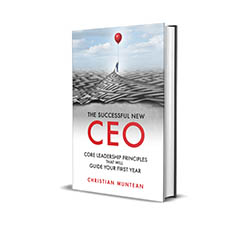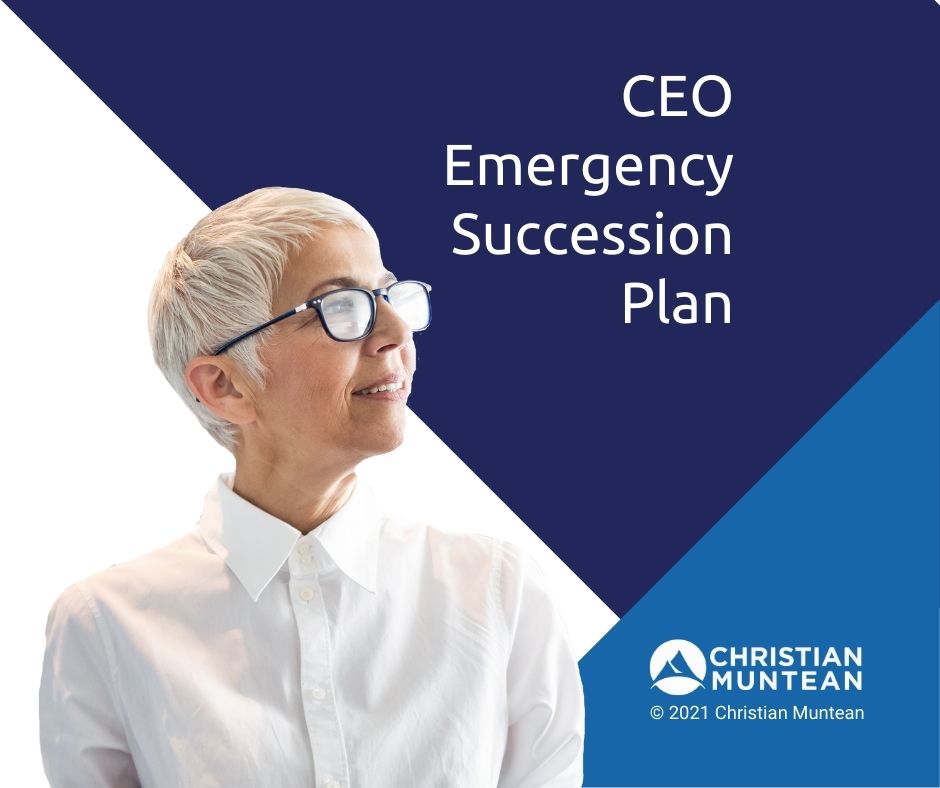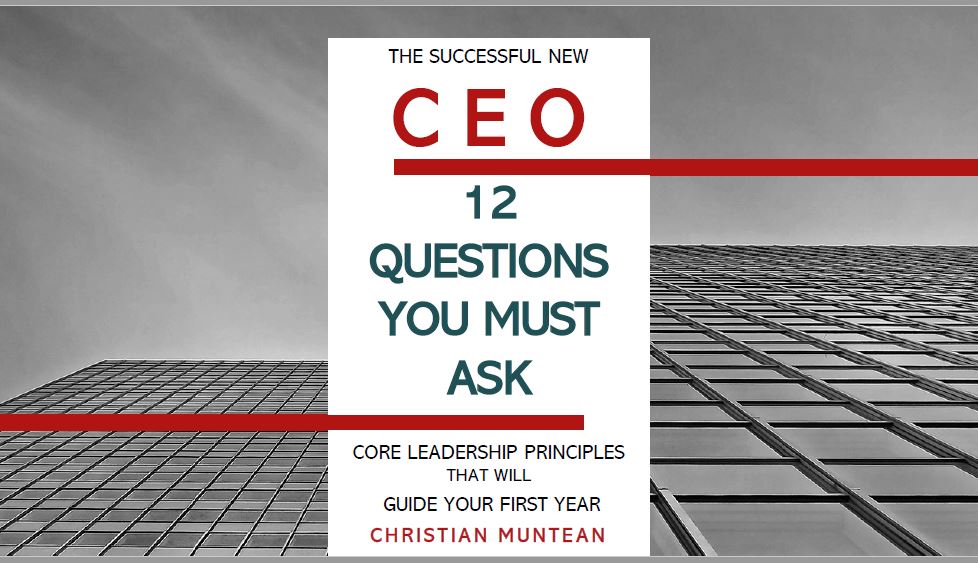How Do We Know If We Are Ready To Scale?

Business growth is often depicted on a chart as a gentle curve sloping up towards success. This is the famous hockey stick graph. It pictures mild growth that suddenly leaps upward due to a compounding effect.
suddenly leaps upward due to a compounding effect.
It’s a nice-looking chart. It’s used a lot. And it is confidently explained as, “We plan to keep growing X% year over year. Over the next five or ten years, we expect uninterrupted growth and then – suddenly – stratospheric results. Our friends and neighbors will be amazed.”
People say that. But it so rarely happens.
Growth actually looks more like uneven stair steps.
Your business will experience a state of growth, at some percentage, then hit what feels like a wall.
But what you are facing isn’t a wall. It’s the bottom of the next step. The bottom of the step represents the current status quo. Doing what has always worked no longer seems to generate growth. At best, it only serves to help you hold steady.
The top of the step represents the change or growth you’d like to experience. To experience change, something needs to change.
The process of stepping up to the next step, up a number of steps, or even skipping steps is called scaling.
Scaling Seems to Be Needed at the Worst Times
Smaller businesses need to scale more often (step up more steps) than large businesses. Common examples of this:
- The step from direct “doing” to managing a team (usually between 1-12 employees).
- The step from managing a team to managing managers (usually between 12 – 36 employees).
- The step from a workforce that is all revenue generating to hiring non-revenue generating staff (finance, HR, IT, etc.)
- The step to building a senior or executive level management team.
- The step to hiring a GM, President, or CEO.
- The step of expanding geographies, building buildings, or other capital investments.
I say it comes at the worst times because often the need or opportunity to scale seems to occur when you have the fewest resources at your disposal.
Top Ten Indicators of When You Are Ready to Scale
Scaling up isn’t about guessing, taking risks, or just getting lucky. You can scale when you are ready. And if you aren’t ready, you can work on the things that make you ready.
Here’s how to know when you are ready to scale:
- You have consistent positive cash flow: You should know where your money is coming from, when it will arrive, and how much to expect. Predictability here is key to confident scaling.
- You and your management team are effective delegators: At least 80% of your time should be spent doing what only someone in your position can do.
- You have strong accounting systems: Many leaders prevent their own growth because they are afraid they can’t track their finances. The reason they are afraid is that they have a very weak or no accounting system. Make it easy to track what is going on financially. This is easier to do when you are small and may not feel like you need it.
- You’ve built and consistently apply systems/processes for performance and safety: Successful scaling is dependent on consistency throughout an organization. Consistency is achieved with thoughtfully designed and commonly used systems and processes.
- You have solid bench strength: One of the primary bottlenecks for growth is not having the managers or technical skills you need when you need them. Keep your management and skill pipelines full. Nurture the people you have.
- You’ve built an accountability culture: Successful scaling can happen when leaders don’t have to have “eyes on” everything that needs to be done. This is possible when you’ve built a healthy culture that expects and is comfortable with accountability.
- You easily hit your business goals: Some leaders get “too big for their britches”. Dreams and vision are good. But be able to do current work before taking on bigger work.
- You can select your clients: You should be at a place where you are able to choose the clients that are best for you.
- Your business culture and practices are aligned with your values and vision: A strong culture (good or bad) helps ensure consistency. When companies are small, culture “just happens”. When they are larger, it takes intentionality. Leaders who excel at crafting cultures find it much easier to lead larger organizations.
- Positive relationships with customers: People should like what you offer and how you treat them. If they do, they’ll serve as a foundation for you. If they don’t, they’ll become a burden.
Can We Scale Without These Ten Indicators?
In some cases – yes. But in those cases, scaling should be the answer to strengthening your organization.
In other words, you should be able to check more boxes off because you scaled, not fewer. In many cases, this means bringing in non-revenue generating employees who are able to help build or strengthen your systems. For example: Finance, HR, safety, a customer service rep, etc.
This, of course, may create a chicken or egg scenario: Do we bring in non-revenue generating employees first or get the revenue first? This scenario is an example of why growth can feel like a wall.
But it’s not a wall. It’s a step. The answer often is you need to jump. You can’t tip toe. Which you do first often matters less than that you do both quickly.
What If The Jump Is Too Big?
Option 1: Don’t buy if you can rent. If you can’t make the full jump all at once – sometimes there is still a solution. Use consultants like Fractional CFOs, HR consultants, IT consultants, etc.
By outsourcing well, you can often get access to much higher quality skills at a lower cost. These kinds of professional services consultants frequently create the ladder to help you climb your first few steps.
Option 2: Form strategic relationships. Build synergistic relationships with companies that are able to help support your growth while providing some of the structural support or predictability that you need.
Conclusion
Scaling isn’t a mystery. If you can check the box off on all or most of the indicators above, you might start considering it. If there are unchecked boxes, you now know some of the strategic work you need to focus on.
Take good care,
Christian
Are you looking for ways to improve company performance? Access my free tools to get started.

Are you interested in learning more about becoming a successful CEO? If so, get a free copy of my book The Successful New CEO. Not a new CEO? I’ve been told by “old hands” that they felt any CEO should read this. So, click here to get your copy today.
by “old hands” that they felt any CEO should read this. So, click here to get your copy today.
There are 𝟭𝟮 𝗰𝗿𝗶𝘁𝗶𝗰𝗮𝗹 𝗾𝘂𝗲𝘀𝘁𝗶𝗼𝗻𝘀 to ask before accepting a new CEO position. Do you know what they are? Instantly download my free e-book here.
𝗧𝗵𝗲 𝗕𝗲𝘀𝘁 𝗧𝗶𝗺𝗲 𝘁𝗼 𝗖𝗿𝗲𝗮𝘁𝗲 𝗔𝗻 𝗘𝗺𝗲𝗿𝗴𝗲𝗻𝗰𝘆 𝗦𝘂𝗰𝗰𝗲𝘀𝘀𝗶𝗼𝗻 𝗣𝗹𝗮𝗻 𝗶𝘀 𝘽𝙚𝙛𝙤𝙧𝙚 𝗬𝗼𝘂 𝗡𝗲𝗲𝗱 𝗜𝘁.
Be prepared for a smooth transition in the event of an unplanned emergency succession. My guide will show you step-by-step how to devise your own plan.
Let’s connect.
I’m passionate about helping leaders to create workplaces they love going to and increasing the value of the services they offer. My results-oriented approach is tailored to each client’s specific situation and needs. As a leadership coach, I have developed a wealth of resources to help you and your team grow and become stronger.
Weekly Newsletter – sign up to receive my weekly articles addressing critical leadership challenges and issues.
The Leadership Coach Podcast – In my podcast, we explore effective, high-impact, and enjoyable leadership. Subscribe.
Find the value of your company with my free assessment tool: The Value Builder System
The Value Builder System™ is a 13-minute online questionnaire that evaluates your business on the eight factors that contribute more to its attractiveness and value. These factors are scored on a scale of 1-100. Businesses that score over 80 are likely to command 70%-100% higher value than others.
Opportunities
Executive and Leadership Coaching: Do you feel overwhelmed? Are you not getting the results you expect from the effort you are putting in? Do you find yourself facing similar challenges time and time again? Would you like to change specific ways of relating or reacting? If you would like to experience predictable, measurable growth Contact me.
Profitable Exit Strategy Workshop: Are you a business owner or partner? Over 55? Starting to think about exiting your business or active management in the next 3-5 years?
- Curious about what your business might be worth?
- Would you like to discover the specific steps you need to take to increase its value and become highly attractive to a buyer?
- Are you planning on handing it over to family or employees and you want to ensure long-term success?
If so, contact me now
Categories
Get Christian’s Newest Book: Train to Lead

Download my free 10-page eBook:
How To Accomplish More Without Doing More:
Eight Proven Strategies To Change Your Life
Discover how to save eight hours during your workweek-even if you're too busy to even think about it. The resource every maxed out executive needs.

